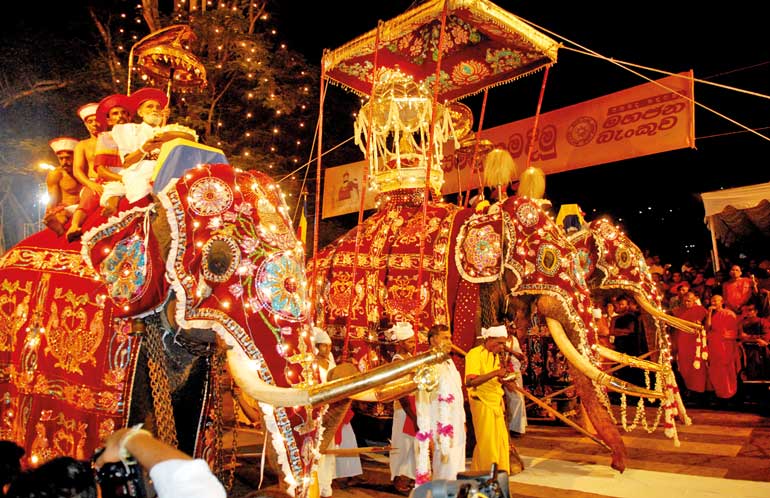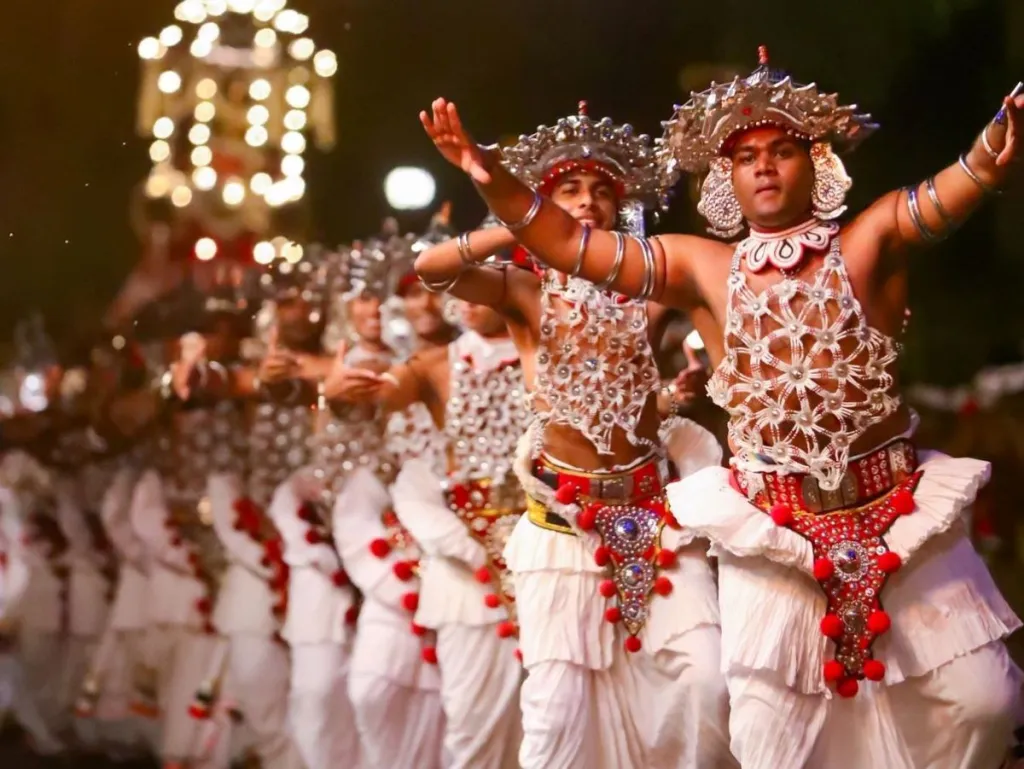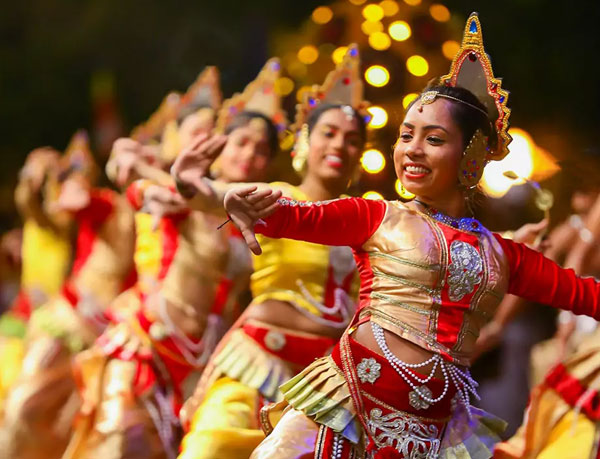Located in the lively island nation of Sri Lanka is a cultural treasure that mesmerizes the senses and embodies tradition like no other - the Kandy Perahera. Immersed in the allure of ancient traditions and alive with the beats of sacred songs and colourful performances, the Kandy Perahera showcases the intricate fabric of Sri Lankan culture.
However, the Kandy Perahera is more than just a show. It has a greater meaning. It's an occasion to recognize the community, of being united despite differences, and the strong will that has always been a part of the Sri Lankan people.
Come along as we explore the captivating world of the Kandy Perahera, where ancient customs blend with vibrant displays, creating a mesmerizing experience that bridges the gap between history and faith.


Let's start our journey back in the 3rd century BC, under the rule of King Devanampiyatissa. When Buddhism spread to Sri Lanka, Emperor Ashoka, a dedicated Buddhist ruler in India, gifted a sapling from the original Bodhi tree in Bodh Gaya, India, where the Buddha achieved enlightenment.
This symbolic act created a special connection between Sri Lanka and the teachings of the Buddha. The sapling found its place in the island's rich soil, marking the beginning of a spiritual path that would influence the fate of a country. Emperor Ashoka's generosity extended beyond his kingdom; with his support, Sri Lanka was enriched with relics and scriptures to strengthen the growing Buddhist community and promote wisdom.
Leap forward a few centuries to the 13th century. An imminent danger stood over the island nation as invaders from Kalinga, India, aimed to seize the sacred tooth relic. But destiny had other plans with the arrival of a courageous woman named Ashoka Mala. Concealed as a dancer, she entered the Kalinga camp, gained the relic, and brought it back to Sri Lanka. This bold move emphasized the significance of the tooth relic and probably resulted in a more extravagant procession to honour its return and protection.
During the Kandyan Kingdom's era (1592-1815), the perahera evolved into a large-scale public celebration. Rulers such as Kirti Sri Rajasinghe (1747-1781) are recognized for allowing the relic to be venerated by the public during the procession. This action not only reinforced the king's position as a guardian of Buddhism but also strengthened public backing for the monarchy.
There were changes in power during the colonial era, but customs stayed strong. This was an important time in the history of the Kandy Esala Perahera. The event ran into trouble when the British took over Kandy in 1815 because they didn't like big public gatherings. At first, the British government put limits on the perahera because they were worried about it. However, the festival's deep cultural importance made it strong, and despite these problems, the perahera went on, though with some changes to make it more sensitive to colonial tastes. As a result, the Kandy Esala Perahera became more than just a religious parade. It became a powerful symbol of Sri Lankan identity, an inspiring reminder of the country's history and spirit.
The perahera was an occasion of faith, culture, and strength that brought together practices from the past and the present. It was a link between the past and the present that showed how strong the Sri Lankan people are.
When Kandyan King Kirthi Sri Rajasinghe ruled (1747–1781), the Modern Perahera began. During this time, the Tooth Relic was believed to belong only to the King, so no one else could worship it. However, King Rajasinghe ordered that the Relic be carried in a parade so that many people could see it and honour it.
When the British took over the Kandyan Kingdom in 1815, they gave the Relic to the Buddhist clergy. The king's duties were taken over by a lay guardian called the "Diyawadana Nilame" when the king wasn't around.
The Kandy Perahera is a vibrant ten-day event that takes place every year in August. Here's a peek into the fascinating components that comprise this show:
The Esala Perahera is a vivid tapestry of spiritual devotion and cultural expression, with a mix of rituals and displays. Reading old books like the "Dalada Siritha," which was written in the 1400s, can help you understand how these holy practices have changed over time. When the "Dalada Perahera" came, it brought together rituals related to the holy tooth relic of the Buddha, which blended in with existing processions celebrating gods and harvest festivals.
These different elements came together to create the enormous spectacle that is the Esala Perahera. The perahera is a place where different kinds of art can be shown, with the beats of traditional drums and the dancing light of flames. Kandyan dance types like Kandyan dancing and fire dancing take centre stage. They add performance and entertainment to the deeply religious part of the procession. Through this mix of art forms, the Kandy Perahera honours both spirituals and artists, and it stands as a reminder of Sri Lanka's rich cultural history.
The show's real stars are the magnificent elephants that parade around the streets dressed in opulent fabrics and sparkling jewellery. As they carry statues and holy relics. The rhythmic sound of traditional Sri Lankan drums fills the air. Witness how captivating performance of dancers wearing colorful costumes, and how their motions reflect the strength of the rhythm. When the sun sets, see how the streets are transformed into a mesmerizing display of flickering flames and vibrant lanterns, casting an amazing glow over the night.

